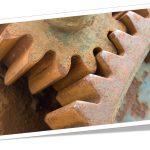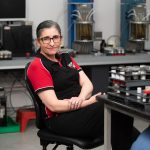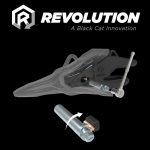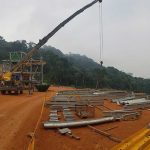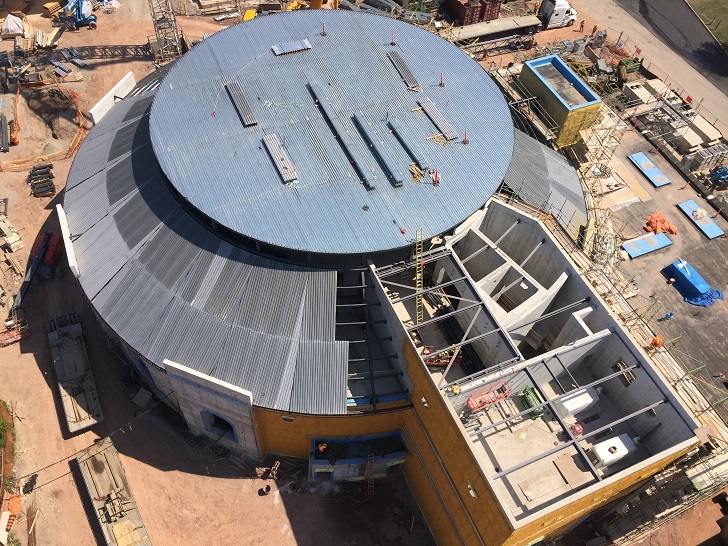amilton Harbour on Canada’s Lake Ontario is part of a multiphase Clean Harbour programme which includes upgrades to a large wastewater treatment plant. Contractors turned to a pump manufacturer with long experience of pumping station design and handling high volumes of untreated water.
Hamilton Harbour has been at the heart of its surrounding communities for many centuries. Once a pristine source of fresh fish and a place of leisure and enjoyment for the local population, industrialisation and the growth of the city of Hamilton have had a detrimental effect on the life of the harbour. By the middle of the 20th century, decades of toxic sediment, storm water run-off, habitat loss, water quality deterioration and other factors had caused severe damage to the Hamilton Harbour ecosystem.
In 1987, the International Joint Commission (IJC), which is the organisation overseeing the Canada-United States Great Lakes Water Quality Agreement, identified the 500 km2 Hamilton Harbour as one of 43 areas of concern (AOC). The fact that it was on a list of locations where environmental degradation seriously impaired the use and environmental health of the Great Lakes was a wake-up call for the city. Over the past few years significant environmental engineering programmes have been implemented, the largest of which is the multiphase Clean Harbour programme.
Wastewater treatment In 2008, the city completed the Woodward Avenue Wastewater Treatment Plant (WWTP) Service Area Environmental Study Report to determine a plan for upgrades to the plant. This recommended investment to manage wet weather flows, provide treatment capacity and meet treatment objectives defined by the Hamilton Harbour Remedial Action Plan, the Ministry of Environment, Conservation and Parks and the Federal Environmental Protection Act.
Located near the southeast corner of the harbour, Woodward Avenue WWTP is the largest wastewater treatment plant in the Hamilton Harbour watershed and among the largest in Ontario. The harbour also contains one of the largest toxic sediment sites on the Canadian side of the Great Lakes. The plant is the largest single source of water flowing into Hamilton Harbour, so the quality of that effluent has a direct and powerful impact on the harbour’s water quality and environmental health. The Woodward upgrade project is a multi-phase, multi-year process that includes a number of sub-projects and each of these sub-projects have their own specification and timelines.
Elevating treatment levels Costing Can$340 million, the upgrades include elevating the plant’s final treatment process from the secondary level to the tertiary (third) level. This increases the processing of the plant’s treated wastewater and will allow the plant to reach strict discharge limits described by the Hamilton Harbour Remedial Action Plan for phosphorus, ammonia and suspended solids.
A significant sub-project is the construction of a new raw sewage pumping station (Figure.1) and collection system control to support wet weather and flooding control initiatives. Having an effective pumping station capable of handling current and projected flows is essential to the functioning of the wastewater treatment and the prevention of overflows in the harbour. Construction on the upgrade began in May 2017 and is projected to be complete in July 2021.
Woodward Avenue Now approaching 60 years of age, the existing wastewater treatment plant has a rated average capacity of 409 million l/day (MLD) and peak rated capacity of 614 MLD. If this is exceeded, the excess water, being a mix of industrial and domestic waste and run-off from the land, is discharged into the harbour. To comply with the long-term projected processing requirements, the plant will have a maximum receiving capacity of 1,700 MLD.
In order to meet this requirement, considerable effort had to be put into designing a highly efficient pumping station containing pumps with a proven track record in handling high volumes of untreated wastewater. After due consideration of the various pump options available, Maple Reinders, contractors for the pump station, together with the City of Hamilton selected KSB Pumps Inc., Canada as its pump supplier on the basis of KSB’s technology and knowledge of pump station design.
Pump house design The design of the existing pump house at Woodward Avenue is rather unusual in that it is a circular construction. Clearly this has proved to have its advantages and benefits, as the new pump house now under construction is also circular, containing a circular split wet well located inside a circular dry well where 12 KSB Sewatec K700-950 G1 VGW vertical dry pit solid handling pump sets are installed (Figure.2).
The pump house has a total elevation of 81 m above sea level, and at almost 30 m the subterranean wet well is much deeper than its predecessor. This larger and deeper wet well prevents system flooding and provides increased system storage.
There are several benefits of the wet well inside the dry well configuration. Firstly, dry well pumps, as opposed to wet well pumps, enable easy access to all pump parts for in-situ maintenance and repair. When components need to be removed from the dry well, they can be easily craned to the surface. The split wet well design, with six pumps allocated to either side, allows one side to be taken off stream for cleaning without any adverse impact on the efficiency of the pump house.
Design challenges As the pump house has a rather unconventional design, KSB had to address a number of design challenges imposed on the configuration of the pump mountings. Formulating a layout for the pumps around the exterior of the wet well was the first issue to contend with. The answer was differing installation angles of pressure for the connection piece/inlet pipe. This in turn meant coming up with mountings peculiar to the configuration. For this KSB provided a tailor-made volute casing for each pump with an integrated mounting flange foot, which allows the pumps to be anchored directly to the cast-in-place foundation blocks and is a concept unique to KSB.
In order to handle the optimum flow of wastewater through the plant, 10 pumps were required for full-time availability, and a further two for standby demands. In addition, collectively the pumps had to be capable of handling up to 23,600 l/s and a potential solids content size of 190 mm. The third significant issue to address was varying flows.
At times when the effluent level is low, cavitation must be avoided and when storm conditions arise high flows have to be accommodated. By installing four variable frequency drives (VFDs), all the pumps automatically respond to the incoming flow. Finally, the pumps had to deliver high levels of efficiency.
Being able to handle large solids and control flow velocity gives the treatment plant the opportunity to drain the interceptors for cleaning through the manipulation and control of the interceptor. On the existing plant it is not possible to lower the level in the wet well to control the velocity in the interceptors.
Thus, when storms occur, extra inflow and increased velocity result in the interceptors losing the ability to contain accumulated sediment and this passes directly to the head works, creating an overload condition. With the new pump house design, it will be possible to drain the interceptors as necessary and remove the extra grit load to the plant.
Smooth finish All the vertically mounted Sewatec pumps are supplied with a 15 m long carbon fibre drive shaft, 700 hp motor, split mechanical seal, long 1050 x 750 mm radius suction elbow and vibration monitoring system. The smooth finish-reducing suction elbows contain a 200 mm clean out port. The motors are at an elevated level in the dry well so cannot be affected by the possibility of flooding from the wet well. While the pump is designed to operate in a dry environment, there is an external clean water flushing line for the mechanical seal.
The provision of redundant seal technology adds an extra layer of protection that prevents wastewater getting out of the pump. With a variety of impeller options and mounting methods, the Sewatec provides the solution for transporting raw wastewater as well as thicker mediums such as bio-solids or sludge.
Marcus Henderson, KSB Pumps Canada regional sales manager, said: “This contract required a combination of high pumping efficiency, good NPSH performance and the ability to deal with solid materials in the un-screened wastewater and storm run-off.” Each of the pumps contains an 898 mm non clog multi-vane radial flow K design impeller giving a free passage of 190 mm and has the capacity to pump 1968 l/s at 21 m.w.c. TDH. The upper end of the normal operating range is 26.25 m.w.c. TDH and the lower end is 16 m.w.c. TDH.
“KSB’s Sewatec pumps are an excellent choice for this job, with an excellent track record of providing reliable service in sewage treatment plants around the world,” says Marcus Henderson. “This dry-installed pump is fitted with variable-frequency drives, IE4 motors and the optimised hydraulic system yields high efficiency, thereby helping to reduce energy consumption and minimise operating costs. The brief required a hydraulic efficiency of 86%, with KSB guaranteeing 86.97% at the design duty condition, but when submitted to witness testing conditions at the KSB factory in Halle, Germany, the pumps delivered 89.1%, some 2.1% more efficiency than we guaranteed.”
For the mechanical seals KSB worked with the local seal supplier on a special configuration to accommodate the pump installation and shaft. Split mechanical seals were selected and positioned above the bearing housing, thereby allowing them to be accessed and replaced in-situ. The dry well design gives the advantage of allowing easy access to both the seals and the bearings for maintenance.
By spring of 2020, construction of the dry and wet wells, including the cast-in-place foundation blocks for the pumps, had been completed (Figure. 3) and work on the service areas at and above ground level was underway. The first of the pumps had been craned into position and anchored to the mountings and complete installation of the pumps, drives and shafts is expected in mid 2021.


